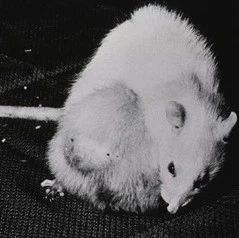
人类胚胎干细胞移植耳聋沙鼠后可恢复其听力
在移植细胞的帮助下,科学家终于让耳聋的沙鼠又一次听到了声音——这些细胞能够发育成神经,进而从耳向脑传输听觉信息。据《自然》杂志9月12日报道,这一进展将成为治疗不同类型听觉损失的一种方法的基础。
在人类中,导致耳聋的最常见原因是内耳毛细胞受损(之所以这样命名,是因为当它们遇到声波震动时会像细长的纤毛一样弯曲),或是向大脑传输信息的神经细胞损伤。当这些毛细胞受损后,与之相关的螺旋神经节细胞往往会因为缺乏使用而开始蜕化。植入物能够代替毛细胞的工作,但如果感觉神经细胞受损,则听力依然十分有限。
“显然最终的目标是取代所有这两类细胞。”主持这项新研究的英国谢菲尔德大学的Marcelo Rivolta表示,“但现在已经能够用人工耳蜗取代毛细胞,因为我们决定首要任务应该从神经细胞开始。”
人类胚胎干细胞移植耳聋沙鼠
在过去,科学家们已经尝试着从胚状体(已经开始分化为不同类型细胞的干细胞集合体)中分离出所谓的听觉干细胞。但是这样的干细胞仅仅能够分裂25次,从而使其不可能满足一次神经细胞移植所需要的数量。
Rivolta和他的同事知道,在胚胎发育期间,少量蛋白质——包括纤维母细胞生长因子(FGF)3和FGF10——是耳的形成所必需的。因此研究人员将人类胚胎干细胞暴露在FGF3和FGF10之中。不同类型的细胞相继形成,其中就包括前体内耳毛细胞,但研究人员同时还能够鉴别并分离出那些开始分化为想要的螺旋神经节的细胞。随后,研究人员将神经前体细胞移植到耳神经受损的沙鼠的内耳中,并在之后的10周对动物进行了跟踪。结果表明,神经细胞的功能被修复了。
“我们只是在非常有限的时间内跟踪了动物。”Rivolta说,“我们如今希望长期跟踪它们。”——他强调,这是为了评估此举增加癌症风险的可能性,以及观察新神经的长期功能。
“这非常令人兴奋。”并未参与此项研究的英国萨塞克斯大学的神经科学家Mark Maconochie表示,“过去,有人曾经合成出单个的毛细胞,或是一些看起来像是来自干细胞的单个神经细胞,即便这样也让该领域的科学家兴奋不已。这是一个真正的质变。”
Rivolta说,现在的问题是这一程序能否被进一步调整,从而能够有效产生更多的传播神经细胞——目前,只有不足20%的用于治疗的干细胞能够发育成为这些耳神经细胞。他推测,通过将FGF3和FGF10之外的生长因子与干细胞混合物结合,研究人员或许能够收获更多的耳前体细胞。
Maconochie强调:“下一个大的挑战将是对毛细胞做一些有效的事情。”

 Restoration of auditory evoked responses by human ES-cell-derived otic progenitors
Restoration of auditory evoked responses by human ES-cell-derived otic progenitors
Wei Chen, Nopporn Jongkamonwiwat, Leila Abbas, Sarah Jacob Eshtan, Stuart L. Johnson, Stephanie Kuhn, Marta Milo, Johanna K. Thurlow,, Peter W. Andrews, Walter Marcotti, Harry D. Moore, & Marcelo N. Rivolta
Deafness is a condition with a high prevalence worldwide, produced primarily by the loss of the sensory hair cells and their associated spiral ganglion neurons (SGNs). Of all the forms of deafness, auditory neuropathy is of particular concern. This condition, defined primarily by damage to the SGNs with relative preservation of the hair cells1, is responsible for a substantial proportion of patients with hearing impairment2. Although the loss of hair cells can be circumvented partially by a cochlear implant, no routine treatment is available for sensory neuron loss, as poor innervation limits the prospective performance of an implant3. Using stem cells to recover the damaged sensory circuitry is a potential therapeutic strategy. Here we present a protocol to induce differentiation from human embryonic stem cells (hESCs) using signals involved in the initial specification of the otic placode. We obtained two types of otic progenitors able to differentiate in vitro into hair-cell-like cells and auditory neurons that display expected electrophysiological properties. Moreover, when transplanted into an auditory neuropathy model, otic neuroprogenitors engraft, differentiate and significantly improve auditory-evoked response thresholds. These results should stimulate further research into the development of a cell-based therapy for deafness.
文献链接:Restoration of auditory evoked responses by human ES-cell-derived otic progenitors






